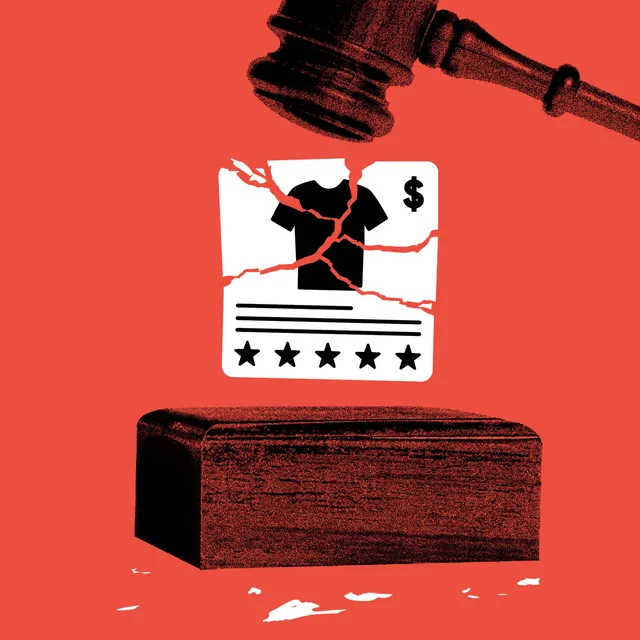All roads lead back to Google,’ the government argued in the first two weeks of its ad tech antitrust trial.
Google’s mission statement paints a picture of a company focused on the greater good: “To organize the world’s information and make it universally accessible and useful.” It’s a phrase designed to inspire trust and foster goodwill. The company even used to sport the more sentimental motto, “Don’t be evil.” But when it comes to its advertising technology empire, the Department of Justice (DOJ) argues that Google’s actions have been far more calculated and self-serving.
In a high-stakes antitrust trial that recently wrapped up the government’s case, the DOJ painted Google as a company that deliberately constructed an ecosystem where everything—quite literally—revolves around itself. Over two weeks of testimony, DOJ lawyers laid out how Google allegedly built a near-impenetrable moat around its ad tech business, shutting out rivals, restricting publishers, and ensuring that everyone in the market had no choice but to play by Google’s rules.
The trial is now in Google’s hands, as it prepares to defend itself in a Virginia federal court. The search giant must convince Judge Leonie Brinkema that its dominance reflects nothing more than smart business decisions and innovation—rather than illegal monopolistic behavior. Let’s break down the key points in this epic battle over the future of the ad tech industry.
A Cold-Blooded Ad Tech Takeover
The DOJ’s case hinges on a simple, yet damning claim: Google turned the ad tech industry into its personal fiefdom. The government argues that Google’s dominance across three critical markets—publisher-side tools (where websites sell ad space), advertiser-side tools (where companies buy that space), and ad exchanges (where auctions take place)—has allowed it to monopolize the entire ecosystem.
While Google insists that its success stems from offering superior products, the DOJ tells a different story. According to government lawyers, Google has primarily grown its ad tech empire by buying up rivals, such as DoubleClick, and integrating its tools in ways that made it nearly impossible for customers to switch to a competitor.
The consequences, according to the DOJ, are stark: advertisers and publishers end up paying more for slower, clunkier tools because Google has no real reason to innovate. Witness after witness testified that alternative products simply don’t stand a chance, leaving the market trapped in Google’s orbit.
The Crown Jewel of Google’s Ad Empire: DoubleClick
One of the DOJ’s main focuses in the trial has been Google’s ad server, DoubleClick for Publishers (DFP). This tool, the government claims, is the linchpin of Google’s dominance. With nearly 90 percent of the market cornered, most publishers feel they have no real alternative but to use Google’s DFP—even though many witnesses described it as “slow and clunky.”
So why stick with it? Because rejecting DFP also means losing access to Google’s AdX, the largest ad exchange in the world. According to James Avery, co-founder of Kevel, most publishers are “deathly afraid” of losing access to the real-time data from Google’s massive pool of advertisers—a critical asset in the split-second decisions that drive the ad industry.
This dynamic, the DOJ argues, is no accident. Google intentionally designed its products to tie publishers to DFP and AdX, ensuring they remain locked into the Google ecosystem.
Google’s Response to Threats: Buy, Neutralize, Dominate
As the trial unfolded, the DOJ painted a picture of Google as a company that didn’t just acquire competitors—it strategically moved to squash any potential threats to its dominance. One of the most prominent examples centers on “header bidding,” a technology that emerged in 2014.
Before header bidding, publishers used the “waterfall” method to sell ad space, offering it to exchanges one at a time, typically giving the first shot to those that had previously offered the highest bids. Google’s AdX, thanks to its integration with DFP, would get a “first look” at ad inventory and snap up the most valuable spots before other exchanges had a chance to bid.
Header bidding, on the other hand, allowed publishers to solicit bids from multiple ad exchanges at once, leveling the playing field and potentially increasing the price publishers could fetch for their ad space. For Google, this new system posed a serious threat to its control over the market.
Rather than sit idly by, Google introduced “Open Bidding,” a competing technology that allowed it to take a cut of the revenue while still giving its AdX exchange a strategic advantage. In many cases, AdX would receive the “last look,” allowing it to beat out competitors by bidding just a penny more than the highest header bid. The result, according to the DOJ, was a system that kept Google firmly in the driver’s seat.
Google, for its part, claimed it was merely trying to improve the user experience, arguing that header bidding slowed down websites and created opportunities for fraud. Yet internal documents revealed a different story: Google executives were well aware of the threat posed by header bidding and took steps to minimize its impact on the company’s dominance.
Publishers Held “Hostage”
In its quest to maintain control, the DOJ argues, Google wasn’t afraid to pull levers that directly disadvantaged its customers. One of the most contentious examples was the introduction of Unified Pricing Rules (UPR) in 2019.
Before UPR, publishers had more flexibility in setting different prices for AdX and other ad exchanges, which allowed them to reduce their reliance on Google’s platform. But UPR changed the game by enforcing a single price across all exchanges, effectively neutralizing publishers’ attempts to diversify.
Witnesses described UPR as a heavy-handed move that “took control out of our hands,” leaving publishers feeling like Google was “holding us hostage.” And while Google executives anticipated pushback, they went ahead with the changes anyway, knowing publishers had little choice but to comply.
A Monopoly Built on Integration
The DOJ’s case ultimately hinges on the fact that Google owns nearly every part of the ad tech stack—giving it unparalleled control over the industry. From publisher ad servers to ad exchanges and advertiser tools, Google’s ecosystem is so deeply integrated that any competitor is at a significant disadvantage.
The government also highlighted Google’s reluctance to leave a paper trail. The DOJ accused the company of liberally labeling internal documents as “attorney-client privileged” and shifting sensitive conversations to off-the-record chat messages. Google, for its part, denied any wrongdoing, arguing that it had produced millions of documents and that its communications were in line with standard business practices.
What’s Next for Google
With the DOJ resting its case, the spotlight now shifts to Google as it presents its defense. The company plans to call a range of witnesses, including representatives from US government agencies that use Google’s ad products, to highlight the value its technology brings to the market.
Google’s core defense is straightforward: it argues that being big isn’t a crime, and that its decisions to integrate products and acquire competitors have ultimately made the ad tech industry more efficient. And it points to the Supreme Court’s precedent that companies aren’t obligated to make deals with competitors.
But with two recent antitrust losses hanging over its head—one involving its search engine and another over the Play Store—Google enters this battle on the defensive. And as internal documents revealed during the trial suggest, even Google’s own executives have, at times, questioned the company’s enormous power in the advertising world.
As this antitrust saga unfolds, the stakes couldn’t be higher—not just for Google, but for the entire ad tech industry. Will Judge Brinkema side with the DOJ and force Google to break apart its empire? Or will the company successfully argue that its actions were nothing more than savvy business moves? The future of online advertising hangs in the balance.










